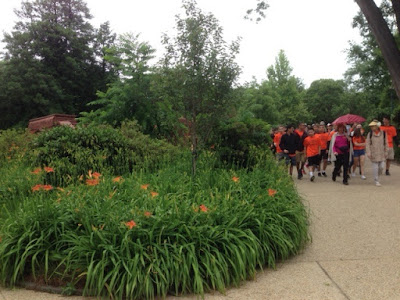Some walks have a higher bar than others, more is asked of them. This is not because of anything they’ve done wrong. They just have the bad luck to come after a restless night or a crazy morning.
Such was yesterday’s stroll around the Capitol. I left the office a little shell shocked, wanting just to escape, that’s all, the pavement beneath my feet, locomotion.
And that, at first, is what revived me. The rhythm, the pace of the walk. Step begets step, movement triggers movement. Soon you are blocks away from where you started, which is the whole idea, of course. You are strolling by the hotel with its sweeping driveway and its busy taxis pulling in and out, and then by a green park with a bell tower.
The people I passed — and there were many, this is high tourist season in the District — had faces to read and scrutinize, had snippets of conversation to offer, words in the wind. The humidity bore down on us, slowed us and held us up.
I saw a bomb-sniffing dog and a troop of high school students on a field trip. I saw a bounty of day lilies in front of the grotto. A Chinese lady motioned for my help, pointed to the Capitol and asked if it was the Library of Congress. That was one question I could answer. “Look for the fountain,” I said, pointing behind the scaffolded dome.
Wending my way back to the office, I passed a sandwich shop, tried to remember what I’d brought for lunch. Nothing special. But it didn’t matter. I was already full.






